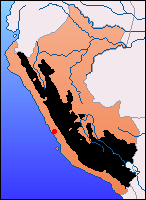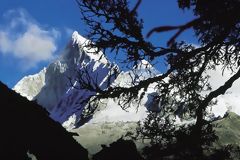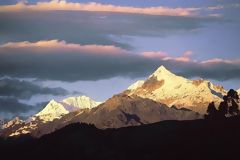 |
Associated Pages: |
 The Andes, one of the longest and most majestic mountain ranges in the world, have been home to advanced civilizations for thousands of years. From the vast Inca empire, known as Tahuantinsuyu, to the pre-Columbian cultures that preceded it, the Andes were a center of human development at altitudes exceeding 4,000 meters. This region stretches from present-day Chile to Colombia, and the Andean peoples adapted impressively to the harsh climatic conditions of the heights, where extreme temperatures dictated daily life.
The Andes, one of the longest and most majestic mountain ranges in the world, have been home to advanced civilizations for thousands of years. From the vast Inca empire, known as Tahuantinsuyu, to the pre-Columbian cultures that preceded it, the Andes were a center of human development at altitudes exceeding 4,000 meters. This region stretches from present-day Chile to Colombia, and the Andean peoples adapted impressively to the harsh climatic conditions of the heights, where extreme temperatures dictated daily life.
The Incas, for example, learned to use the environment to their advantage, developing advanced agricultural systems that included the construction of terraces in the mountains and complex irrigation systems. They cultivated over a thousand varieties of potatoes, a crop perfectly suited to high altitudes, and learned to preserve their food through a natural freezing process, using the cold night temperatures of the Andes.
 The Altiplano, a vast plateau located in the Andean region, was the heart of these civilizations. Here, the inhabitants raised llamas and alpacas, using their wool to make fine and durable textiles, which became an essential part of clothing and trade. In addition to being agricultural experts, the Andeans were masters in working with precious metals, particularly in mining gold and silver, which they then transformed into art objects and ceremonial offerings. The traces of their architectural legacy are still visible in sites like Machu Picchu and the fortress of Sacsayhuamán.
The Altiplano, a vast plateau located in the Andean region, was the heart of these civilizations. Here, the inhabitants raised llamas and alpacas, using their wool to make fine and durable textiles, which became an essential part of clothing and trade. In addition to being agricultural experts, the Andeans were masters in working with precious metals, particularly in mining gold and silver, which they then transformed into art objects and ceremonial offerings. The traces of their architectural legacy are still visible in sites like Machu Picchu and the fortress of Sacsayhuamán.
To maintain the cohesion of their empire, the Incas implemented a rotating labor system called mita, in which citizens worked on public projects such as road construction. This allowed the creation of a network of over 40,000 kilometers of roads, known as the Qhapaq Ñan, which connected the entire empire and facilitated the movement of troops, goods, and people. Today, many of these roads are still in use, demonstrating the durability of their construction methods.
The Peruvian Andes offer an unforgettable experience for travelers seeking adventure and a connection with nature. From hiking to climbing, the Andean mountain range is the ideal place for outdoor sports enthusiasts. One of the most popular destinations is the Cordillera Blanca, the highest tropical mountain range in the world, famous for its snow-capped peaks, including Huascarán, the highest mountain in Peru.
Huascarán National Park, a UNESCO World Heritage site, is a paradise for hikers and climbers. With its stunning turquoise lagoons, glaciers, and unique biodiversity, it offers routes for all levels, from easy walks to challenging technical ascents. Highlights include the hike to Laguna 69, one of the most photographed spots, and the Santa Cruz Trek, a multi-day journey through spectacular landscapes.
For those interested in history, walking along the Qhapaq Ñan, the Inca road system, is an incredible way to explore the Andes. One of the most famous sections is the Inca Trail, which leads to the citadel of Machu Picchu. This route combines adventure with the discovery of rich Inca history and passes through breathtaking landscapes, including mountains, cloud forests, and ancient archaeological sites.
Other lesser-known but equally fascinating routes include the Salkantay Trail and the Choquequirao Trail, offering a quieter, less crowded experience compared to the traditional Inca Trail. Choquequirao, often called the "hidden sister of Machu Picchu," is an impressive archaeological site that receives far fewer visitors, making it an ideal option for adventurers seeking a more authentic experience.
Tourism in the Andes is not limited to outdoor activities. The region is also renowned for its rich cultural heritage and unique cuisine. Visitors can sample typical dishes such as pachamanca, a feast of meats and tubers cooked underground with hot stones, or rocoto relleno, a spicy pepper stuffed with meat and spices. Additionally, Andean communities keep their textile traditions alive and offer visitors the chance to purchase handmade garments made using ancestral techniques.
For those wishing to explore the Andes, it is important to consider the altitude. It is recommended to spend a few days acclimatizing before embarking on long hikes or climbs. Wearing appropriate clothing for temperature fluctuations is essential, as nights can be cold even in summer. Additionally, it is crucial to stay hydrated and bring sunscreen, as the sun can be intense at high altitudes.
With its combination of adventure, history, and culture, the Andes offer an unparalleled experience that will leave visitors with lasting memories.